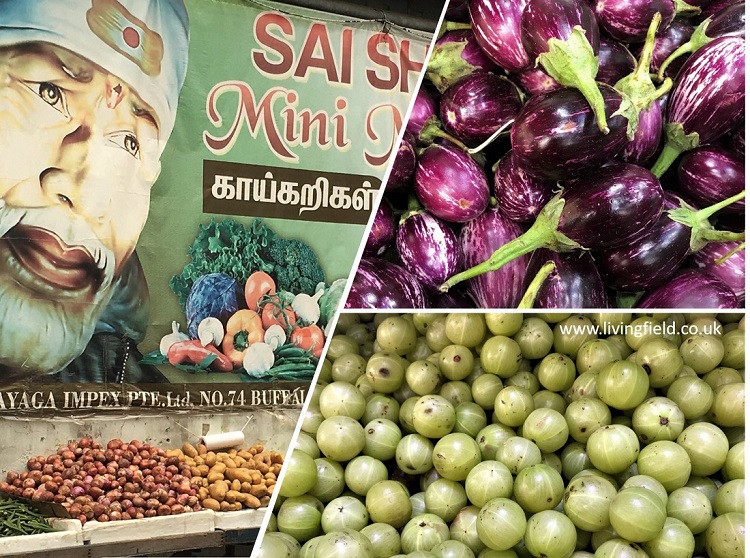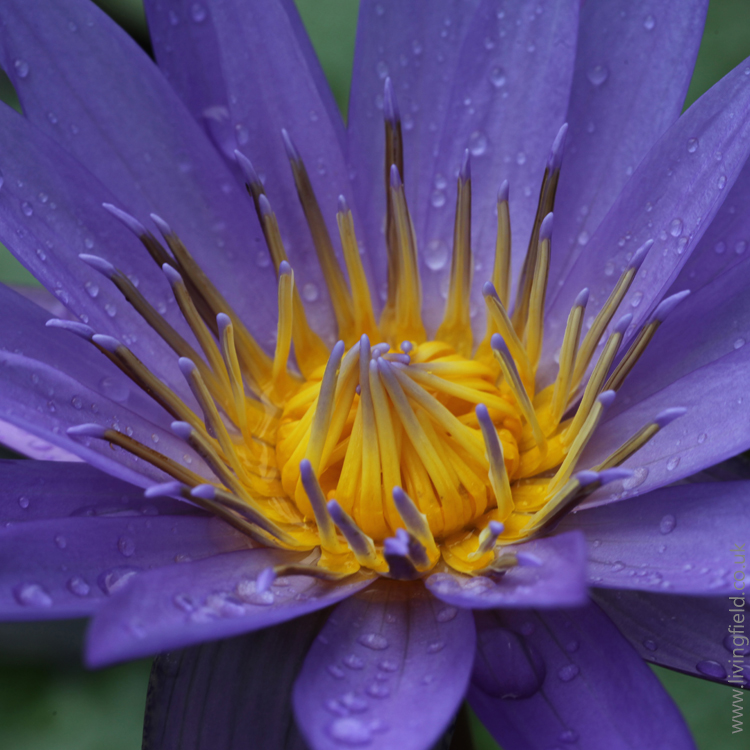One in a series on vegetable markets around the world: this one in ‘Little India’, Singapore.
Fresh vegetables, unpackaged, mean local production, short food chains, fine taste and a high nutritional content. The Living Field encourages local growing and use of vegetables, most recently through its Vegetable Map of Scotland.
But we also enjoy visiting fresh vegetable markets in other places, for example in Bangkok, Inle Lake Burma and Carsassonne in France.
Here we look at some of what’s on offer at Tekka, in the district of Singapore known as Little India [1]. As in most other vegetable markets, the goods offer a range of storage times from a few days to weeks or even months.
Here are some unusual ones … unusual to us that is. They are widely eaten throughout the tropics and sub-tropics. To the left of the three above are flowers of the banana or another plantain, encased in their reddish sheaths. The tough outer layers are usually discarded then the softer inners used in soups, salads and curries.
To the right are custard apples, not so appetising on the outside but split them with a knife to get at soft tasty fruits inside. In the middle, fresh coconuts, pared ready for extracting the ‘milk’, jostle on the central shelf, gourds above them and more banana products below. Just visible above the banana flowers (left) are two jackfruit, their rough surfaces protecting luscious, tasty, orange fruits inside.
Next are two types of fruit that will be more familiar in European supermarkets. Lower right in the panel above is a mass of gooseberries and above them the shiny purple fruits of brinjal (also known as aubergine and eggplant) of which there are many forms. The brinjal’s botanical name is Solanum melongena, relative of the potato therefore (Solanum tuberosum) and some poisonous nightshades. The wall poster to the left of them is advertising a vegetable mart.
And here are some more unusual ones. To the right of the flower stall (centre) are spiny gourds Momordica dioica, a fruit usually cooked as a vegetable, fried with meat for example. They are a little larger than a golf ball.
To the left are clusters of green ‘berries’ – the fruit of the pea eggplant or turkey berry Solanum torvum, used to give some bitterness to various dishes including curries.
So brinjal, pea aubergine and potato are part of the same plant group. People throughout the world have learnt to eat the safe parts of these Solanum species and leave or neutralise the inedible or poisonous parts (usually the leaves). Potato’s edible parts are tubers rather than fruits – though if left to flower and fruit, potato produces berries similar in appearance to those of pea aubergine [3].
And finally there are things both familiar and exotic. To the left are limes and next to them sections of banana stem. Then in the panel of three to the right are what looks like a type of okra or cucumber, green but characteristically streaked with white, then tomato in the centre and at the bottom a collection of carrots, beans and what are probably long tubers locally called ‘radishes’ but which are not a bit like the small oval radish grown in Britain.
Further sources and links
[1] Little India, Singapore: vegetables, herbs and spices at and around the Tekka Centre off Serangoon Road and Bukit Timah Road.
[2] Information on the trees and shrubs mentioned above can be found in several searchable databases: e.g., see entries for custard apple Annona reticulata at the Agroforestree database of the World Agroforestry Centre and the CABI Invasive Species Compendium.
[3] Potato plants can form fruits in fields in Scotland and if dropped, persist in the soil for many years, giving rise to ‘volunteer’ populations that occur as weeds in subsequent crops of potato or other species. The role of potato as a weed is described on this web site at Crop-weeds.
All images by Living Field.












